- Turban is not Hijab. When and why did Sikhs start wearing turbans? Do people in other parts of India wear turbans? What is the deeper meaning/ reason behind the 5 K’s of Khalsa? British role in mandating wearing of turbans!
During the current debate on hijab some learned individuals are comparing it with the turban worn by Sikhs. Turbans are worn by many communities across India.
The purpose of this piece is to share a historical perspective on turban worn by Sikhs, tell about the origin and purpose of the 5 K’s, why it became important and deeper meaning behind each of the 5Ks including the turban.
Firstly,
we must know that people in different parts of India wear Turbans for e.g.
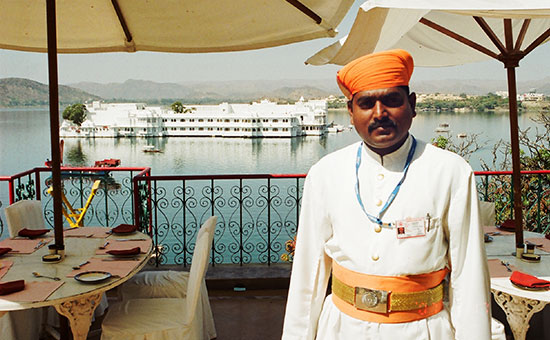 Pagdi Mewar style, Udaipur.
Pagdi Mewar style, Udaipur.
![]()
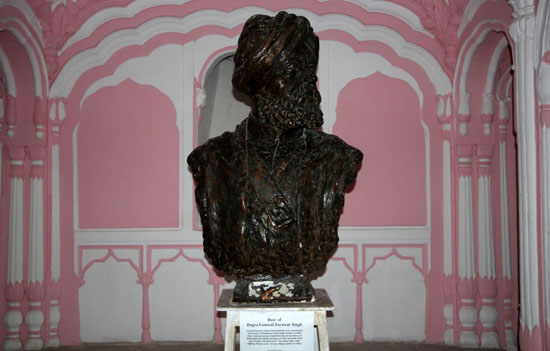 Bust of Dogra general Zorawar Singh, army of Maharaja Gulab Singh of J&K.
Bust of Dogra general Zorawar Singh, army of Maharaja Gulab Singh of J&K.
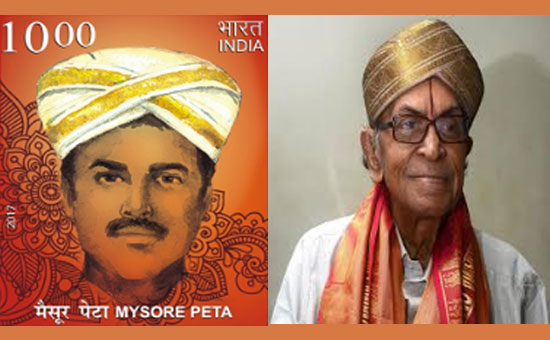 Mysore Peta
Mysore Peta
While
nowadays, wearing a turban and having long hair leads to the assumption that
the person is a Sikh, once upon a time this was a common feature in society.
There was nothing sectarian about wearing a turban. It was more for the safety
of head, and also a social tradition. With the passage of time, the custom was
abridged. The pagri came to be used only on important occasions like marriage,
death etc. It has also been a part of social ethos. In North India esp. some Hindu ceremonies and rituals are incomplete without it.
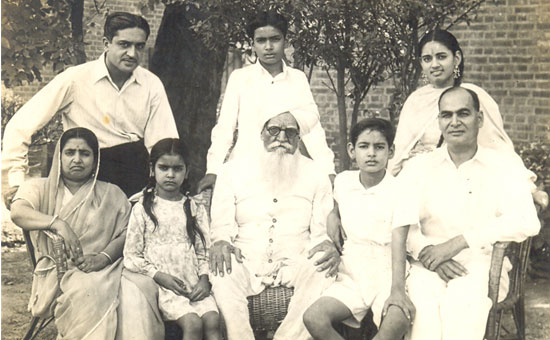 Author’s great grand-father with Pagdi
Author’s great grand-father with Pagdi
My great grand-father who lived in Punjab around 1948
wore a pagdi too. On asking, my Dadaji said that generation wore pagdis. It may
be those born 1900 onwards (like Dadaji) were exposed to British style
education and thus gave up traditional ways.
In most North Indian communities there is an exchange of
Pagadis between families indicating a close friendship or a dear relationship
for generations to come. Such is the value and importance of the Pagdi, that
once it is knocked over, it means insult and lost pride. Handing over your
Pagadi is also considered compete surrender, in many communities. In many
communities upon the death of the head of the family, the eldest son is made to
wear the turban signifying his position as the new family head. The custom is
called Rasam Pagari and takes place a few days after death.
While in a few, a man handing over the Pagadi to a woman indicates the death of
her husband.
People of Rajasthan, Gujarat, Maharashtra and Mysore etc. wear pagdis. Each have a different style. Read more About
Turbans of India
So why and when did Sikh start wearing turbans?
Sikhs started sporting turbans, in large numbers, only after 1699. Here is why -
On 30 March 1699, at Anandpur, the 10th Guru Govind Singhji gave a
stirring speech to the assembly about the need to protect their spiritual and
temporal rights. He then asked if anyone would offer his head in the services
of God, Truth and Religion. The five came forward were designated the Five
“Beloved Ones” and termed “Khalsa” (i.e. Purified). 3 pg.319
According to Khalsa tradition, its followers had to
sport the five Ks i.e. Kesh (long hair), Kangha (comb), Kirpan (sword), Kara
(steel bracelet), Kachcha (knickers).
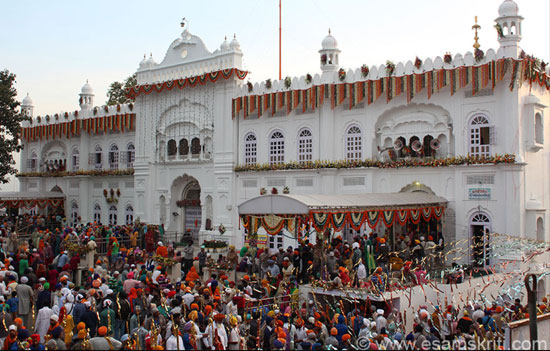 Keshgarh Sahib Gurudwara where Khalsa was founded in 1699. Hola Mohala 2014
Keshgarh Sahib Gurudwara where Khalsa was founded in 1699. Hola Mohala 2014
Since Sikhs are not supposed to cut their hair (some
Sikhs do i.e. beyond the scope of this article) the turban helps them manage
the hair. However, in 1699 the reason was different. Long hair and turban
helped the Guru give his followers an identity and importantly protect their
face and head from sword cuts and lathi blows. Kangha or comb was required to keep beards in proper shape so they
looked impressive and manly.
The
Kara was a reminder that the Sikh
spirit was strong and unbending. The Kachcha
was more suitable for fighting the Mughals in than the dhotis and loose
trousers of the Muslims. The Kripan
was for self-defence and protection of the oppressed. 3 pg. 326 The Kara was also useful in hand to hand fights and “guarded
the vulnerable portion of the right hand which wielded the kripan.” 1 pg. 80
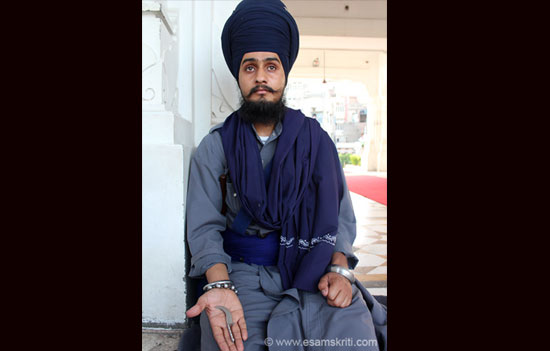 Note Kada worn, how thick it is. Hari Mandir 2012.
Note Kada worn, how thick it is. Hari Mandir 2012.
According to a devout Sikh lady, other reasons for the five k's “was the need to look ferocious like Mughal soldiers. Nobody could run away from the battlefield as they could be immediately identified and soldiers were always ready for battle.”
Today young boys wear a simple piece of fabric over
their tied-up hair, called a patka.
Why the number 5 for 5 Ks?
It is not something that began due to being part of the panch kakars (five external symbols) of the tenth Guru. One of Shiva's names is Ushnisha, in the Shiva Sahasranama, one who wears a turban.
In
fact Guru Nanak laid emphasis on the observance of five things: One, Nam (singing the praise of God), Two, Dan or charity. Three, Ashnan or daily bath to keep body clean.
Four, Sewa or service to humanity.
Five, Simran or constant prayer for
the deliverance of soul. 3 pg. 656
Is wearing a turban compulsory for all
Sikhs?
According
to this 2019 article
in The Week, “The 16th Generation descendant of Guru Nanak, Baba Vikramaditya Bedi does not sport the 5Ks because his great grand- father believed 5Ks were only for time of war. The New York-born Vikramaditya says, "The Five Ks came from the 10th Guru, ‘My great-grandfather Baba Shib Dayal Bedi would relax these rules in our family, as he believed the five Ks were only for a time of war. Like all descendants of Guru Nanak today, Vikramaditya traces his lineage to him through the guru’s son, Baba Lakhmi Chand. The guru’s other son, Sri Chand, was an ascetic who never married.”
So why is Turban wearing considered essential today?
There
could be various reasons. Know about the role of the British and Akali Dal.
Fast forward to 1860's
Having
experienced the strength of Sikh opposition during the Anglo-Sikh wars and
grateful for the assistance received from Sikh princes during the Mutiny of
1857, the British realized that Sikhs would be an effective buffer between
Afghanistan and India.
Therefore, the British reduced the number of Bengali soldiers (many of whom were involved in the 1857 Mutiny) and replaced them with loyal Sikhs and Punjabi Muslims. It however, insisted that only Kesadhari Sikhs could join the army i.e. those who sported the five k's.
Coming
to the Akali role-In 1925, the Sikh Gurudwaras Act was passed signalling their
complete victory. The Act’s definition of a Sikh leant strongly towards the
exclusivist Khalsa view and is “one who believed in the ten gurus and the
Granth Sahib and was not a patit (apostate). This last proviso was particularly
odious to the Hindu members of the Legislative Council.” 2 pg. 212
In
the context of Sikhs a patit is one
who does not follow Sikh Rehat Maryada. Trimming of the long hair, idol
worship, smoking, following the rituals of other faiths, or not following Sikh
religious injunctions makes one a patit.
Hope article helped you find answers. You do not have to agree. Read and decide for yourself.
References
1
A History of Sikhs, Volume I by Khushwant Singh
2
A History of Sikhs, Volume II by Khushwant Singh
3
The History and Culture of Indian People Volume 7, published by Bhartiya Vidya
Bhavan.
Also read
1.
How
the British divided Punjab into Hindu and Sikh
2.
About
Turbans of India
3.
Album
Hola Mohala
4.
Golden Temple
album
5.
Is
modern day Sikhism a colonial construct